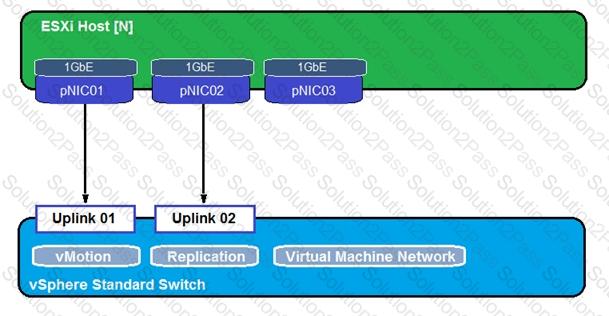3V0-21.21 VMware Advanced Design VMware vSphere 7.x Free Practice Exam Questions (2025 Updated)
Prepare effectively for your VMware 3V0-21.21 Advanced Design VMware vSphere 7.x certification with our extensive collection of free, high-quality practice questions. Each question is designed to mirror the actual exam format and objectives, complete with comprehensive answers and detailed explanations. Our materials are regularly updated for 2025, ensuring you have the most current resources to build confidence and succeed on your first attempt.
An architect is designing storage for a new vSphere environment to meet the following requirements:
Asynchronous replication is required between two sites.
The impact on the storage layer should not impact the performance of the compute layer.
Each application tier will require different replication attributes.
Virtual machine live migration across compute and storage must be supported.
Virtual machine aware back up will be leveraged.
Operational management overhead should be minimized.
Operational automation should be supported.
Which storage design recommendations would meet the requirements?
An architect decides to separate virtual desktops and application servers into separate vSphere clusters to meet security and management requirements.
What are two implications of this design decision? (Choose two.)
An architect is designing a new vSphere environment to meet the following requirements:
The environment must support 5,000 virtual machines.
The environment will be built initially using 350 hosts.
Which vCenter Server appliance deployment size should the architect specify for the design?
Which two of the listed requirements would be classified as performance non-functional requirements? (Choose two.)
As part of a new hybrid cloud initiative for a large financial company, the customer technical team is presenting an overview of the current state of the infrastructure and their vision for a new solution.
The project team captures notes during the presentation and adds them to the discovery documentation. Which of the listed statements is a design constraint?
Refer to the exhibit.

During a requirements gathering workshop, the customer shares the following about their existing ESXi host virtual networking infrastructure:
The customer confirms that:
Each ESXi host has approximately 200 virtual machines.
They want to maximize the number of concurrent virtual machine migrations.
When placing a host in maintenance mode, it takes a long time to evacuate the virtual machines.
Which two recommendations should the architect make in order to help the customer overcome their challenge? (Choose two.)
